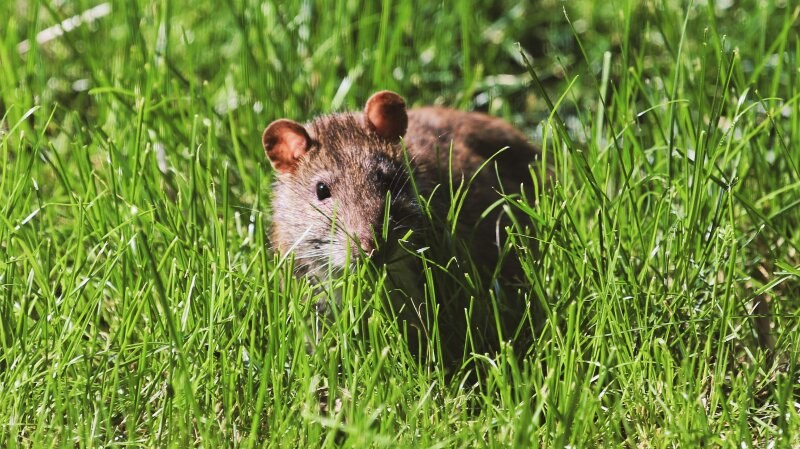5 Plants That Repel and Keep Rats Away from Your Yard
Reading time: 6 minutesIn your outdoor oasis, where flowers bloom and you sit down and relax, an unwelcome intruder has disrupted the harmony — the notorious rat. These pesky rodents not only threaten your yard's integrity but also carry diseases like leptospirosis, salmonella, and hantavirus.
Wondering if you can harness the power of nature to defend your outdoor space? Absolutely!
In this blog, we delve into the world of plants that add charm to your garden and serve as formidable allies in your battle against rats.
You can create a natural barrier by strategically incorporating these green defenders into your landscape. From aromatic herbs to resilient shrubs, let's explore the botanical arsenal that can help keep rats at bay, ensuring your garden remains a sanctuary of serenity and beauty.

$91.61/Quarterly



Quarterly billing is automatic - no muss no fuss!


Plants That Repel Rats
Here are plants that you can grow in your yard to repel rats.
1. Chrysanthemums
Chrysanthemums are beautiful flowers that come in a variety of colours and shapes. They’re also effective rat repellents thanks to their high pyrethrin content, a natural insecticide that affects the nervous system of rats and other pests. Pyrethrin is found in the yellow centers of the flowers, so make sure to choose varieties with prominent disks.
Chrysanthemums are super easy to grow and require full sun and well-drained soil. They bloom from late summer to fall and can be planted in borders, containers, or beds. You can also cut the flowers and use them as fresh or dried bouquets. To keep these flowers healthy, water them regularly, fertilize them once a month, and prune them after flowering.
2. Onion
Who would’ve thought this cooking staple was a nemesis of rats? It’s a powerful rat repellent because of its pungent smell and taste. Onion contains sulphur compounds that irritate the eyes and nose (of rats, too) and allicin, which can cause anemia and oxygen deprivation in rats if ingested.
Onion is a cool-season crop that can be grown from seeds, sets, or transplants. They prefer full sun and rich, moist soil. It can be harvested when the bulbs are fully formed and the tops start to yellow and fall over. You can store the bulbs in a cool, dry, and dark place for several months.
3. Lavender
Lavender is a fragrant herb famous for its soothing and relaxing properties. It’s also a great rat repellent, as it has a strong and pleasant scent that rats dislike. Lavender contains essential oils that act as natural repellents for rats and other pests, such as mosquitoes, flies, and moths.
This perennial plant can grow up to 60 cm tall with gray-green leaves and purple-blue flowers that bloom from late spring to early summer. It can be planted in pots, borders, or beds and can also be used as a hedge or a ground cover.
4. Black Pepper
This spice is a potent rat repellent. Black pepper contains piperine, a compound that stimulates the pain receptors of rats and other mammals, causing them to sneeze, cough, and scurry away.
Black pepper is a tropical vine that can grow up to 4 meters long. It has glossy green leaves and small white flowers that produce green berries that turn red when ripe. These berries are dried and ground to make black pepper.
Black pepper needs warm and humid conditions, partial shade, and rich, moist soil. It can be grown in pots, trellises, or greenhouses and can be harvested when the berries are fully developed.
5. Christ Plant
Christ plant, also known as crown of thorns, is a succulent plant with a distinctive appearance. It has thick, spiny stems and small, bright flowers that contrast with its dark green leaves. It’s also a good rat repellent, as it has a thorny and prickly texture that rats avoid. Christ plant can also produce a milky sap that’s toxic and irritating to rats and other animals.
So, if you have pets, you might want to skip this one out. This plant can also act as an irritant for humans, so make sure to wash your hands after handling them. It can be grown in pots, containers, or beds and reach up to 1 meter in height.

FAQs About Rodent Control
How do I know if I have rats in my yard?
Some signs that you may have rats in your yard are:
Droppings: Rats leave behind small, dark, cylindrical droppings about 1 cm long. You may find them near food sources, nesting areas, or pathways.
Gnaw marks: These rodents have sharp teeth that can gnaw through wood, plastic, wires, and other materials. You may notice chew marks on your plants, structures, or belongings.
Burrows: Rats dig burrows to hide, nest, and store food. You may find burrows near walls, fences, sheds, or compost piles.
Tracks: They leave behind footprints and tail marks on soft surfaces, such as soil, sand, or dust. You may also see smudge marks on walls or pipes where rats rub their fur.
Strange Sounds: They make squeaking, scratching, or scurrying noises, especially at night when they’re most active. You may hear them in your attic, trees, or under your deck.
How do I use plants to repel rats?
To use plants to repel rats, you should:
Choose plants that rats find repulsive or toxic, such as the ones mentioned above.
Plant them strategically around your yard, especially near potential entry points, food sources, or nesting areas. Maintain your plants regularly by watering, pruning, and fertilizing them as needed. Combine plants with other rat control methods, such as traps, baits, or repellents.
What are some other methods of rat control?
Here are some additional ways you can get rid of rats:
Traps: Traps capture or kill rats when they trigger a mechanism. There are different types of traps, such as snap or glue traps. You should place traps along the walls, corners, or pathways where rats frequent and lure them in with peanut butter, cheese, or nuts.
Baits: Baits are poisonous substances that kill rats when they eat them. Different types of baits exist, such as pellets, blocks, or liquids. You should place baits in tamper-resistant stations that prevent access by children or pets and check them regularly for signs of activity or dead rats.
Repellents: Repellents deter rats from entering or staying in an area. Different repellents exist, such as sprays, granules, or ultrasonic devices. You should apply repellents around the perimeter of your yard or near the places where rats are likely to enter or nest.

When All Else Fails, Turn To Professionals
Sure, the right plants might keep these raggedy rodents away. But what happens if you have a bigger rat problem than just a lost Remy (Ratatouille reference)?
For a rat infestation, you may need professional help. Buzz Boss offers top-notch pest control services to protect your yard from rats and other pests, such as mosquitoes, wasps, ants, and spiders.
Check out our BuzzShield, BuzzShield® Insect, or BuzzShield® Rodent packages. When we say our results are guaranteed, we mean it! Even if your pests come back, we come back to ensure our process continues until the job is done.

